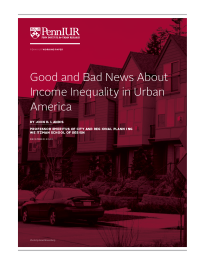Key Message
The findings present a mixed outlook: nominal income inequality has increased, particularly in counties with more productive economies, while spatial income inequality has generally decreased. However, the relationship between these changes and factors such as residential segregation and racialized economic disparities remains tenuous. This highlights the limited utility of income inequality measures in formulating anti-poverty policies and emphasizes the need for a more nuanced understanding of local economic dynamics.


